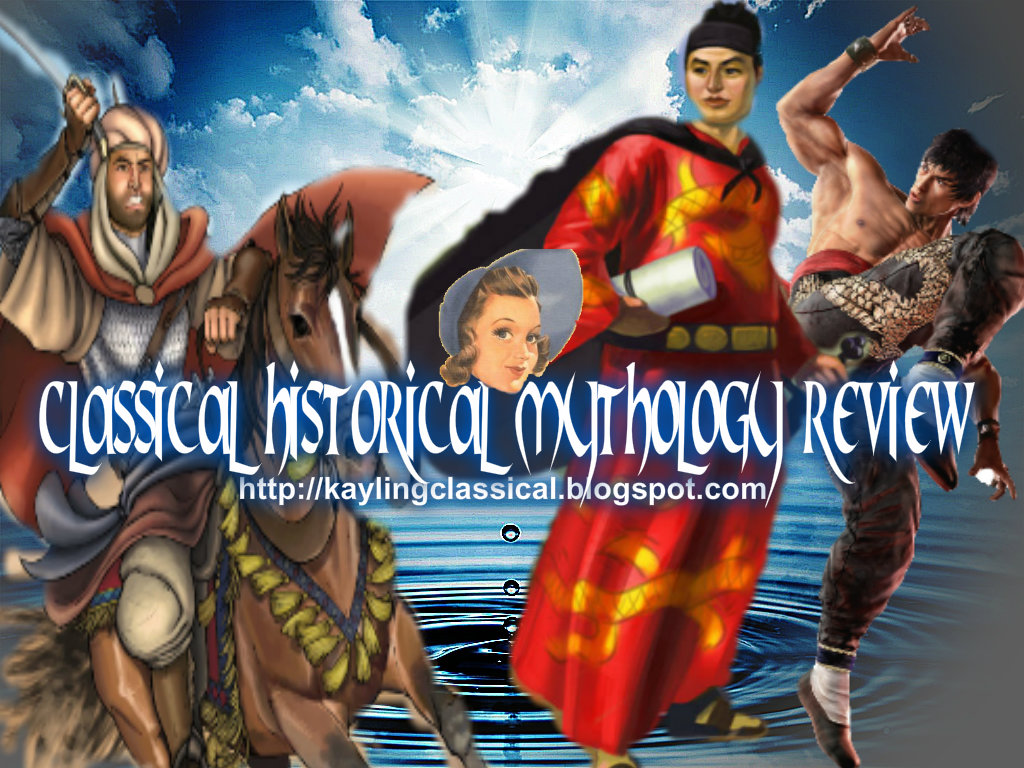The dominant religious beliefs during the Ming dynasty were the traditional mixtures of ancestor worship, Daoism and Buddhism. The Chinese believed in a host of deities in what may be termed Chinese folk religion. The late Ming period saw the first arrival of Jesuit missionaries from Europe such as Matteo Ricci and Nicolas Trigault.
There were also other denominations including the Dominicans and Franciscans. Ricci worked with the Chinese mathematician, astronomer, and agronomist Xu Guangqi to translate the Greek mathematical work Euclid's Elements into Chinese for the first time in 1607. The Chinese were impressed with European knowledge in astronomy, calendrical science, mathematics, hydraulics, and geography. Most European monks presented themselves more as educated elites than religious figures, in an effort to gain trust and admiration from the Chinese. However, most Chinese were suspicious and even outright critical of Christianity due to Chinese beliefs and practices that did not coincide with the Christian faith.
The highpoint of this contention was the Nanjing Religious Incident of 1616–22, a temporary triumph of the Confucian traditionalists when Western missionaries and science were rejected in favor of the belief that Western science derived from a superior Chinese model; this was soon rejected in favor of once again staffing the Imperial Astronomical Board with Western missionaries learned in science.
Besides Christianity, the Kaifeng Jews had a long history in China; Ricci discovered this when he was contacted by one of them in Beijing and learned of their history in China. Islam in China had existed since the early 7th century during the Tang Dynasty; during the Ming Dynasty there were several prominent figures—including Zheng He—who were Muslim. The Hongwu Emperor also employed Muslim commanders in his army, such as Chang Yuqun, Lan Yu, Ding Dexing, and Mu Ying.
During the Ming Dynasty, the doctrines of the Song Dynasty scholar-official Zhu Xi (1130–1200) and Neo-Confucianism were embraced by the court and the Chinese literati at large. However, total conformity to a single mode of thought was never a reality in the intellectual sphere of society. There were some in the Ming who—like Su Shi (1037–1101) of the Song—were rebels at heart and were not abashed to criticize the mainstream dogmatic modes of thought. Leading a new strand of Confucian teaching and philosophy was the scholar-official Wang Yangming (1472–1529), whose critics said that his teachings were contaminated by Chan Buddhism.
In analyzing Zhu Xi's concept of "the extension of knowledge" (i.e. gaining understanding through careful and rational investigation of things and events, Wang realized that universal principles were concepts espoused in the minds of all. Breaking from the mold, Wang said that anyone, no matter what socioeconomic status or background, could become as wise as the ancient sages Confucius and Mencius, and that the writings of the latter two were not the source of truth, but merely guides that could have flaws if carefully examined. In Wang's mind, a peasant who had many experiences and drew natural truths from these was more wise than an official who had carefully studied the Classics but had not experienced the real world in order to observe what was true.
Conservative Confucian officials were wary of Wang's philosophical interpretation of the Confucian classics, the increasing number of his disciples while still in office, and his overall socially rebellious message. To curb his political influence he was often sent out to deal with military affairs and rebellions far away from the capital. Yet his ideas penetrated mainstream Chinese thought, and spurred new interest in Daoism and Buddhism. Furthermore, people began to question the validity of the social hierarchy and the idea that the scholar was above the farmer.
Wang Yangming's disciple and salt-mine worker Wang Gen gave lectures to commoners about pursuing education to improve their lives, while his follower He Xinyin challenged the elevation and emphasis of the family in Chinese society. His contemporary Li Zhi (1527–1602) even taught that women were the intellectual equals of men and should be given a better education; both Li and He eventually died in prison, jailed on charges of spreading "dangerous ideas". Yet these "dangerous ideas" of educating women had long been embraced with mothers giving their children primary education, as well as courtesans who were as literate and similarly trained in calligraphy, painting, and poetry as their male hosts.
In opposition to the liberal views of Wang Yangming were the conservative officials in the censorate—a governmental institution with the right and responsibility to speak out against malfeasance and abuse of power—and the senior officials of the Donglin Academy, which was reestablished in 1604. These conservatives wanted a revival of orthodox Confucian ethics. Conservatives such as Gu Xiancheng (1550–1612) argued against Wang Yangming's idea of innate moral knowledge, stating that this was simply a legitimization for unscrupulous behavior such as greedy pursuits and personal gain. These two strands of Confucian thought created factionalism amongst ministers of state, who—like the old days of Wang Anshi and Sima Guang in the Song Dynasty—used any opportunity to impeach members of the other faction from court.
Wang Gen was able to give philosophical lectures to many commoners from different regions because—following the trend already apparent in the Song Dynasty—communities in Ming society were becoming less isolated as the distance between market towns was shrinking. Schools, descent groups, religious associations, and other local voluntary organizations were increasing in number and allowing more contact between educated men and local villagers. Jonathan Spence writes that the distinction between what was town and country was blurred in Ming China, since suburban areas with farms were located just outside and in some cases within the walls of a city. Not only was the blurring of town and country evident, but also of socioeconomic class in the traditional four occupations, since artisans sometimes worked on farms in peak periods and farmers often traveled into the city to find work during times of dearth.
A variety of occupations could be chosen or inherited from a father's line of work. This would include—but was not limited to—coffinmakers, ironworkers and blacksmiths, tailors, cooks and noodle-makers, retail merchants, tavern, teahouse, or winehouse managers, shoemakers, seal cutters, pawnshop owners, brothel heads, and merchant bankers engaging in a proto-banking system involving notes of exchange. Virtually every town had a brothel where female and male prostitutes could be had. Male catamites fetched a higher price than female concubines since pederasty with a teenage boy was seen as a mark of elite status, regardless of sodomy being repugnant to sexual norms.
Public bathing became much more common than in earlier periods. Urban shops and retailers sold a variety of goods such as special paper money to burn at ancestral sacrifices, specialized luxury goods, headgear, fine cloth, teas, and others. Smaller communities and townships too poor or scattered to support shops and artisans obtained their goods from periodic market fairs and traveling peddlers. A small township also provided a place for simple schooling, news and gossip, matchmaking, religious festivals, traveling theater groups, tax collection, and bases of famine relief distribution.
Farming villagers in the north spent their days harvesting crops like wheat and millet, while farmers south of the Huai River engaged in intensive rice cultivation and had lakes and ponds where ducks and fish could be raised. The cultivation of mulberry trees for silkworms and tea bushes could be found mostly south of the Yangzi River; even further south of this sugarcane and citrus were grown as basic crops. Some people in the mountainous southwest made a living by selling lumber from hard bamboo.
Besides cutting down trees to sell wood, the poor also made a living by turning wood into charcoal, burning oyster shells to make lime, fired pots, and wove mats and baskets. In the north traveling by horse and carriage was most common, while in the south the myriad of rivers, canals, and lakes provided cheap and easy water transport. Although the south had the characteristic of the wealthy landlord and tenant farmers, there were on average many more owner-cultivators north of the Huai River due to harsher climate, living not far above subsistence level.
Compared to the flourishing of science and technology in the Song Dynasty, the Ming Dynasty perhaps saw fewer advancements in science and technology compared to the pace of discovery in the Western world. In fact, key advances in Chinese science in the late Ming were spurred by contact with Europe. In 1626 Johann Adam Schall von Bell wrote the first Chinese treatise on the telescope, the Yuanjingshuo (Far Seeing Optic Glass); in 1634 the last Ming emperor Chongzhen acquired the telescope of the late Johann Schreck (1576–1630).
The heliocentric model of the solar system was rejected by the Catholic missionaries in China, but Johannes Kepler and Galileo Galilei's ideas slowly trickled into China starting with the Polish Jesuit Michael Boym (1612–59) in 1627, Adam Schall von Bell's treatise in 1640, and finally Joseph Edkins, Alex Wylie, and John Fryer in the 19th century. Catholic Jesuits in China would promote Copernican theory at court, yet at the same time embrace the Ptolemaic system in their writing; it was not until 1865 that Catholic missionaries in China sponsored the heliocentric model as their Protestant peers did.
Although Shen Kuo (1031–95) and Guo Shoujing (1231–316) had laid the basis for trigonometry in China, another important work in Chinese trigonometry would not be published again until 1607 with the efforts of Xu Guangqi and Matteo Ricci. Ironically, some inventions which had their origins in ancient China were reintroduced to China from Europe during the late Ming; for example, the field mill.
The Chinese calendar was in need of reform since it inadequately measured the solar year at 365 ¼ days, giving an error of 10 min and 14 sec a year or roughly a full day every 128 years. Although the Ming had adopted Guo Shoujing's Shoushi calendar of 1281, which was just as accurate as the Gregorian Calendar, the Ming Directorate of Astronomy failed to periodically readjust it; this was perhaps due to their lack of expertise since their offices had become hereditary in the Ming and the Statutes of the Ming prohibited private involvement in astronomy. A sixth-generation descendant of Emperor Hongxi, the "Prince" Zhu Zaiyu (1536–611), submitted a proposal to fix the calendar in 1595, but the ultra-conservative astronomical commission rejected it.
This was the same Zhu Zaiyu who discovered the system of tuning known as equal temperament, a discovery made simultaneously by Simon Stevin (1548–1620) in Europe. In addition to publishing his works on music, he was able to publish his findings on the calendar in 1597. A year earlier, the memorial of Xing Yunlu suggesting a calendar improvement was rejected by the Supervisor of the Astronomical Bureau due to the law banning private practice of astronomy; Xing would later serve with Xu Guangqi in reforming the calendar in 1629 according to Western standards.
Source : ultra.wikia




